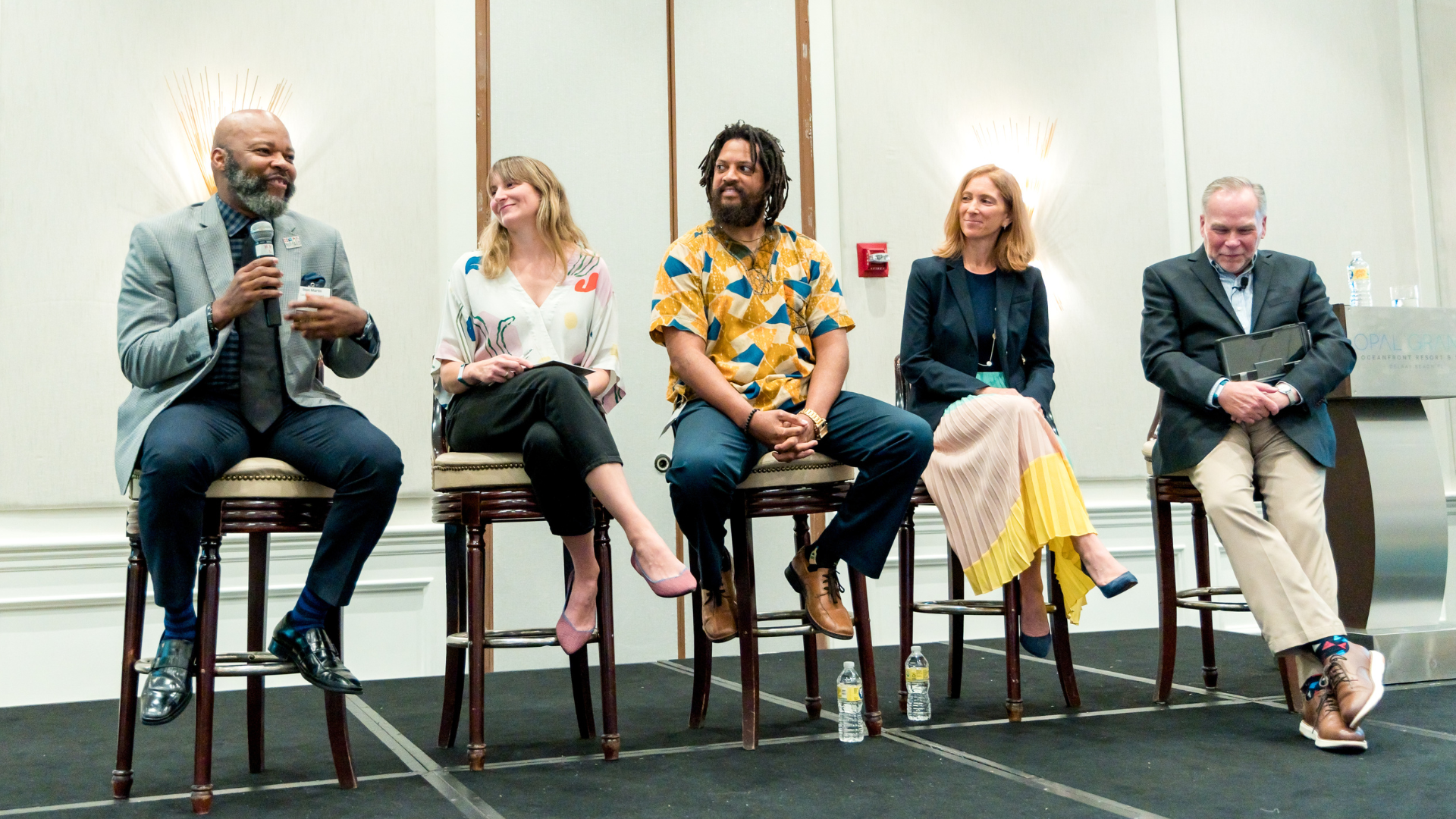As the opening keynote speaker at the Collective Impact Summit held in Toronto 6-10 October, Melody Barnes brought considerable political insight and experience to the question of Why Collective Impact and Why Now? Barnes, who served as assistant to US President Barack Obama and director of the White House Domestic Policy Council from 2009 to January 2012, was a key player in creating the White House Council for Community Solutions, which was established by the President in 2010 to seek solutions to America’s most serious problems, which the President felt certain would be found in local communities and not in Washington.
 Trained as a lawyer, Barnes was chief counsel to Edward M. Kennedy on the Senate Judiciary Committee, executive vice president for policy at the Center for American Progress, and senior domestic policy advisor to the Obama for America campaign before joining the White House staff.
Trained as a lawyer, Barnes was chief counsel to Edward M. Kennedy on the Senate Judiciary Committee, executive vice president for policy at the Center for American Progress, and senior domestic policy advisor to the Obama for America campaign before joining the White House staff.
As the Council conducted its research into communities from across America that were successfully addressing complex problems, “they realized that it was the characteristics of Collective Impact that were the common denominator”. In its June 2012 Final Report the Council chose to focus on Community Solutions for Opportunity Youth as the issue of critical national importance because of their untapped potential and all four recommended strategies were clearly aligned with the theory and practice of the Collective Impact framework:
- Drive the Development of Successful Cross-Sector Community Collaborations
- Create Shared National Responsibility and Accountability
- Engage Youth as Leaders in the Solution
- Build More Robust On-Ramps to Employment
Explicit in these strategies were five attributes that were found to be common to cross-sector community collaboratives “that actually move the needle”, very similar to the conditions of the CI framework:
- Shared vision and agenda
- Effective leadership and governance
- Alignment of resources toward what works
- Dedicated staff capacity and appropriate structure
- Sufficient funding
Now part-time Chair of The Aspen Institute’s Forum for Community Solutions, Barnes is continuing to provide leadership to encourage further development of collaborative community approaches and supporting communities to effectively address their most pressing challenges by pursuing four complementary strategies:
- Building awareness by documenting and lifting up impactful strategies and stories of success
- Mobilizing stakeholders through knowledge and network development
- Removing barriers by advocating for effective policy
- Catalyzing investment by encouraging funder partnerships
The Opportunity Youth Incentive Fund is the first funding collaborative developed by the Forum and is currently enabling 33 initiatives in communities across America with the support of two dozen corporate and foundation funders. This active focus on mobilizing funding is perhaps the most significant difference with the traditional CI literature.
Barnes is very optimistic that these approaches are working and that “there is a way forward” to move on the problems that people think are so intractable: “People have been collaborating for generations, but we think this Collective Impact overlay which brings structure and discipline is a key difference”. She also emphasized the importance of getting community voices directly at the table and cited the example of how important youth voices were in shaping the original White House Council recommendations as well as designing these new initiatives: “It is impossible to have a community based collaborative without the community”.
In an interactive exchange with the audience, it was noted that the White House Council was a very important initiative and that we were “not used to seeing this kind of thing placed so highly in the political spectrum in Canada.” On the other hand, it was interesting that while the government had accepted the recommendations of the Council, that so much of the implementation had evolved to the private and third sector through the Aspen Institute and others. Asked if this meant that she didn’t believe in government any more, Barnes response was unequivocal: “Absolutely not! While government can be slow, I will never back away from the importance of the federal government. But we have seen the success at the community level”.
Why collective impact and why now? Melody Barnes is clear:
“We have seen the results! I know that these strategies can work.”
View attachment here: melody_barnes_at_the_collective_impact_summit.pdf




